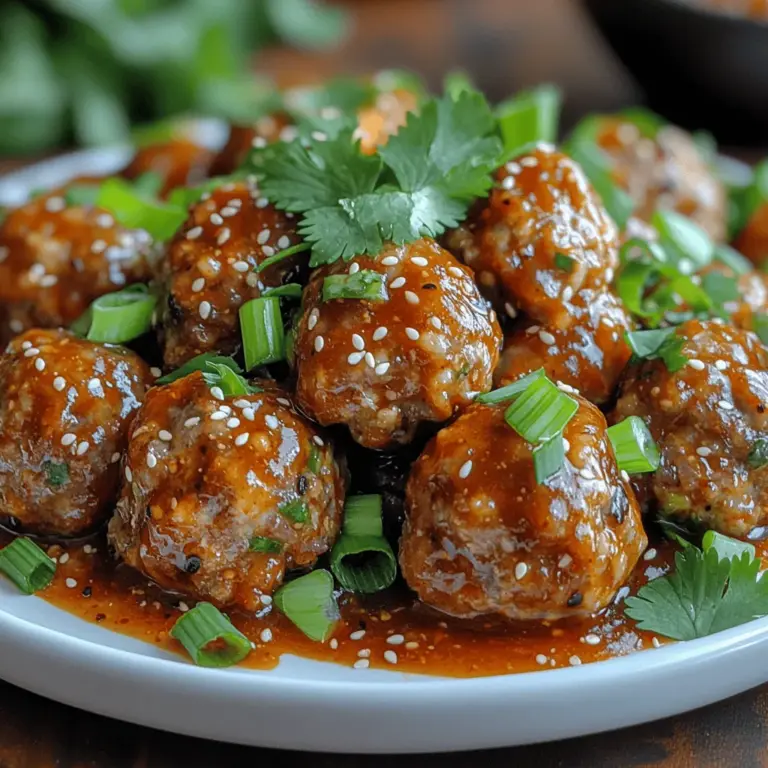Introduction
Lasagna is a beloved Italian dish that has captured the hearts and appetites of families worldwide. With its layers of rich flavors and comforting ingredients, it is no wonder that lasagna has become a staple at family gatherings, potlucks, and special occasions. The act of preparing homemade lasagna transcends mere cooking; it embodies the joy of sharing delicious meals with loved ones and creates lasting memories around the dinner table.
As you embark on the journey of making your own classic lasagna, you’ll find that it is more than just a recipe. It is a culinary tradition that invites creativity and personalization. Whether you prefer a traditional meat sauce or a vegetarian spin, the beauty of lasagna lies in its versatility. In this comprehensive guide, we’ll explore the history of lasagna, the essential ingredients that define this classic dish, and the preparation steps to help you achieve the perfect homemade lasagna that will impress your family and friends.
Understanding Lasagna
Lasagna has a rich history that dates back to ancient times, with roots in the Greek dish “Laganon,” which consisted of layers of pasta and sauce. Over the centuries, this dish evolved into what we now recognize as lasagna, particularly in Italy. Each region of Italy has its variations, reflecting local ingredients and culinary traditions. For example, in Bologna, you’ll find the iconic Lasagna alla Bolognese, featuring a hearty ragù made with ground meat and béchamel sauce. Meanwhile, in Naples, the emphasis might be on lighter, tomato-based sauces with fresh mozzarella.
The beauty of lasagna lies in its adaptability, allowing home cooks to experiment with different flavors and textures. This flexibility not only honors the original dish but also lets families create their unique take on a classic favorite, making it a cherished recipe handed down through generations.
Different Regional Variations of Lasagna
As we delve deeper into the world of lasagna, it’s essential to recognize the various regional interpretations that exist. In addition to Lasagna alla Bolognese, other popular variations include:
– Lasagna di Ricotta: Often found in southern Italy, this version features layers of ricotta cheese, spinach, and tomato sauce, catering to those who prefer a lighter, vegetarian option.
– Lasagna al Forno: A baked version that typically includes a rich meat sauce, béchamel, and plenty of cheese, resulting in a creamy, indulgent dish that is perfect for special occasions.
– Seafood Lasagna: A coastal variation that incorporates seafood like shrimp, clams, and scallops, often paired with a white sauce, offering a delightful twist on the traditional recipe.
Key Ingredients that Define a Classic Lasagna
To create an authentic and delicious classic lasagna, understanding the key ingredients is crucial. Let’s take a closer look at the essential components that make this dish truly special:
1. Lasagna Noodles: The foundation of any lasagna, these flat pasta sheets come in both fresh and dried varieties. While fresh noodles yield a tender texture, dried noodles are easy to work with and hold up well during baking.
2. Meat Options: The traditional choice for lasagna is ground beef or pork, which adds richness and depth to the dish. However, for those seeking a meatless option, vegetables such as mushrooms, zucchini, and eggplant can be used as flavorful substitutes.
3. Cheese Varieties: A classic lasagna typically features a combination of cheeses, including ricotta, mozzarella, and Parmesan. Ricotta provides creaminess, mozzarella offers stretchiness, and Parmesan adds a sharp, nutty flavor.
4. Tomato Sauce: A hearty tomato sauce is essential for flavor and moisture. You can opt for a homemade sauce made with fresh tomatoes, garlic, and herbs, or choose a high-quality store-bought option for convenience.
5. Herbs and Spices: Fresh basil, oregano, and garlic are traditional herbs that elevate the flavor profile of lasagna. Using a blend of these herbs will create a fragrant and aromatic dish.
6. Quality Ingredients: The importance of using high-quality ingredients cannot be overstated. Fresh produce, artisanal cheeses, and homemade sauces contribute significantly to the overall taste and authenticity of your lasagna.
Essential Ingredients for Classic Lasagna
Now that we have a solid understanding of what makes lasagna special, let’s dive deeper into the essential ingredients that will be the stars of your homemade version.
Lasagna Noodles
When it comes to lasagna noodles, you have a couple of options. You can either use traditional dried noodles, which require boiling before assembly, or opt for no-boil noodles that can be layered directly into the dish. No-boil noodles are a time-saver, but traditional noodles tend to absorb more sauce, leading to a richer final product. Whichever type you choose, ensure that the noodles are of good quality to achieve the best results.
Meat Options
For the meat lovers among us, ground beef and pork are the traditional choices that impart a savory flavor to the dish. A mix of both can add complexity and depth. However, if you’re looking for alternatives, plant-based ground meat or lentils can be excellent substitutes that provide protein without sacrificing taste. When selecting your meat, consider the fat content as well; a bit of fat enhances flavor and moisture in the final dish.
Cheese Varieties
Cheese is where lasagna truly shines. Ricotta cheese, with its creamy texture, serves as the base for the cheese mixture. Combine ricotta with eggs, salt, and pepper for added richness. Mozzarella, known for its meltability, is used for topping the lasagna and creating that delightful gooey layer. Finally, a sprinkle of freshly grated Parmesan cheese not only enhances flavor but also adds a beautiful golden crust when baked.
Tomato Sauce
The tomato sauce serves as the heart of your lasagna, bringing moisture and flavor to each layer. You can create a homemade sauce by simmering crushed tomatoes, garlic, onions, and herbs to infuse the flavors. Alternatively, high-quality store-bought marinara can work in a pinch, especially if you’re short on time. Whether homemade or store-bought, ensure that the sauce is seasoned well to complement the other ingredients.
Herbs and Spices
Herbs and spices bring your lasagna to life. Fresh basil and oregano are classic Italian herbs that provide aromatic flavor. A touch of garlic can elevate the entire dish, adding a depth of flavor that pairs beautifully with the richness of the cheese and meat. For a bit of heat, consider adding red pepper flakes to the sauce, especially if you enjoy a little kick in your meals.
Importance of Quality Ingredients in Achieving Authentic Flavors
Using quality ingredients is paramount to achieving authentic flavors in your lasagna. Fresh, locally sourced produce and artisanal cheeses can make a significant difference in the final taste. When shopping for ingredients, consider visiting local farmers’ markets or specialty grocery stores where you can find fresher options. The effort you put into selecting high-quality ingredients will pay off in a lasagna that is bursting with flavor and that your family will rave about.
Preparation Steps for Homemade Lasagna
Now that we have gathered our ingredients, it’s time to dive into the preparation steps for creating your own homemade lasagna. Follow these detailed instructions to ensure that each layer is packed with flavor and texture.
Preparing the Meat Sauce
The first step in crafting your lasagna is to prepare the meat sauce. This is where the dish begins to come together, so take your time to develop rich flavors.
1. Choosing the Right Meat: Start by selecting your meat. Ground beef, pork, or a combination works best. Opt for a mix that has some fat content for richness and flavor.
2. Cooking Technique: In a large skillet or saucepan, heat a tablespoon of olive oil over medium heat. Add the ground meat, breaking it apart with a wooden spoon. Brown the meat until it is cooked through and no longer pink. This step is crucial for developing a savory flavor base.
3. Incorporating Herbs and Spices: Once the meat is browned, add finely chopped onions and minced garlic to the pan, sautéing them until they become translucent. This will infuse the dish with aromatic flavors. Next, add your tomato sauce and mix well. Season the sauce with salt, pepper, and your choice of herbs, allowing it to simmer for at least 20-30 minutes. This simmering process will deepen the flavors and create a robust sauce.
Making the Ricotta Cheese Mixture
While the meat sauce simmers, you can prepare the ricotta cheese mixture, which adds creaminess and richness to the lasagna.
1. Combining Ricotta with Eggs and Seasonings: In a mixing bowl, combine ricotta cheese with one or two beaten eggs. The eggs will help bind the mixture together and create a firmer texture. Season the mixture with salt, pepper, and a pinch of nutmeg for added flavor. Stir until well combined and set aside.
2. Tips for Achieving the Perfect Texture: For a smoother ricotta mixture, consider using a food processor to blend the ricotta, eggs, and seasonings until creamy. This will ensure that the mixture spreads evenly between the layers of noodles.
With these essential steps completed, you’re well on your way to assembling your homemade classic lasagna. The combination of savory meat sauce, creamy ricotta, and gooey mozzarella will create a dish that is not only delicious but also comforting and satisfying. Stay tuned as we continue with the assembly and baking process in the next part of this ultimate guide to homemade classic lasagna.
{{image_2}}
Assembling the Lasagna
When it comes to assembling your Spicy Korean BBQ Meatball lasagna, the process is as enjoyable as it is rewarding. Start by laying out all your ingredients, including cooked meatballs, sauce, noodles, and cheese. This organization will streamline your assembly process, ensuring each layer gets the attention it deserves.
Layering Techniques for Optimal Flavor Distribution
To create a mouthwatering lasagna, mastering the layering technique is crucial. Begin with a thin layer of sauce at the bottom of your baking dish. This prevents the noodles from sticking and allows for easier serving. Place a layer of noodles on top, followed by a generous spread of your spicy Korean BBQ sauce. Next, add a layer of meatballs, ensuring they are evenly distributed. Sprinkle a layer of cheese atop the meatballs, using mozzarella or a cheese blend for that gooey texture. Repeat these layers, starting with sauce, then noodles, followed by meatballs, and finishing with cheese.
This method not only enhances flavor distribution but also ensures that each slice of lasagna is a perfect amalgamation of the different elements. Remember, the key is balance; too much of any single ingredient can overwhelm the dish.
Importance of Balance Between Sauce, Cheese, and Noodles
Achieving the right balance between sauce, cheese, and noodles is essential for a well-structured lasagna. The sauce adds moisture and flavor, while the cheese contributes creaminess and richness. The noodles serve as the backbone of the dish, holding everything together. Aim for a ratio where no single component overshadows the others. For example, if you find that your sauce is particularly spicy, you might consider adding extra cheese to mellow the flavors.
Final Touches Before Baking
Once your lasagna is assembled, it’s time for the final touches. Drizzle a bit of the remaining sauce over the top layer of cheese to prevent it from drying out during baking. Additionally, sprinkle some extra cheese on top for a golden, bubbly finish. For those who want to take it up a notch, consider adding a dash of Korean chili flakes or sesame seeds for an extra kick and texture.
Covering and Sealing the Lasagna
To ensure optimal cooking, cover your lasagna with aluminum foil. This traps steam, helping the noodles cook through while keeping the top from burning. Be sure to seal the edges well to prevent steam from escaping. If you prefer a crispier top, you can remove the foil for the last 15-20 minutes of baking.
Baking the Lasagna to Perfection
Recommended Baking Time and Temperature
Preheat your oven to 375°F (190°C). Once your lasagna is assembled and covered, place it in the oven and bake for 45 minutes. After this initial baking time, remove the foil and allow it to bake for an additional 15-20 minutes, or until the cheese is golden and bubbly. This two-step baking process ensures that the noodles are tender while achieving that desirable crust on top.
Tips for Ensuring Even Cooking
For even cooking, place your lasagna in the center of the oven. If you have a convection oven, use it to circulate heat more efficiently, promoting even cooking. Additionally, let your lasagna rest for about 10-15 minutes after baking before slicing. This resting period allows the layers to firm up, making it easier to cut clean slices without everything sliding apart.
How to Know When Your Lasagna is Done
You’ll know your lasagna is done when the cheese is melted and golden brown, and the sauce is bubbling around the edges. If you have a food thermometer, the internal temperature should reach at least 165°F (74°C) to ensure everything is heated through.
Serving Your Homemade Lasagna
Ideal Side Dishes and Accompaniments
A Spicy Korean BBQ Meatball lasagna pairs beautifully with simple side dishes. A fresh garden salad with a tangy vinaigrette can help cut through the richness of the lasagna. Alternatively, serve it with garlic bread or a side of roasted vegetables for a complete meal.
Presentation Ideas for a Beautiful Table Setting
To elevate your dining experience, consider how you present your lasagna. Use a sharp knife to cut perfect squares, and serve each piece on a warm plate. Garnish with fresh chopped green onions or cilantro for a pop of color. A sprinkle of sesame seeds can also add an appealing touch.
Suggested Wines and Beverages to Pair with Lasagna
For beverages, consider a light-bodied red wine like Pinot Noir or a crisp white wine such as Sauvignon Blanc, which can complement the spicy flavors of the meatballs. If you prefer non-alcoholic options, a refreshing iced tea or sparkling water with a slice of lemon can be delightful accompaniments.
Storing and Reheating Leftover Lasagna
Best Practices for Refrigeration and Freezing
If you have leftovers, storing them properly is important to maintain freshness. Allow the lasagna to cool completely before covering it tightly with plastic wrap or aluminum foil. You can store it in the refrigerator for up to 3 days or freeze it for up to 3 months. When freezing, consider portioning the lasagna into individual servings for easy reheating later.
How to Properly Reheat Lasagna Without Sacrificing Texture
To reheat your lasagna, preheat your oven to 350°F (175°C). Place the slice in an oven-safe dish and cover it with aluminum foil to keep it moist. Heat for about 20-30 minutes, or until the internal temperature reaches 165°F (74°C). If you prefer to reheat in the microwave, place a slice on a microwave-safe plate and cover it with a damp paper towel to prevent it from drying out. Heat on medium power in short intervals, checking frequently.
Creative Ways to Use Leftover Lasagna
Leftover lasagna can be repurposed into several creative dishes. Consider crumbling it into a rich and hearty soup or using it as a filling for stuffed peppers. Alternatively, you could create lasagna rolls by slicing the leftovers into strips, rolling them up with cheese and additional sauce, and baking until heated through.
Common Mistakes to Avoid When Making Lasagna
Overcooking or Undercooking the Noodles
One common mistake when making lasagna is not cooking the noodles properly. If you’re using traditional lasagna noodles, be sure to cook them al dente, as they will continue to absorb moisture during baking. Alternatively, if you are using no-boil noodles, ensure you have enough sauce to properly hydrate them during cooking.
Skipping the Resting Period After Baking
After taking your lasagna out of the oven, resist the temptation to dig in immediately. Allowing it to rest for at least 10-15 minutes is crucial for the layers to set. Skipping this step can result in a messy serving.
Misbalancing Ingredients in Layers
Another frequent pitfall is misbalancing the ingredients in your layers. Too much sauce can lead to a soggy lasagna, while too little can create a dry dish. Aim for a harmonious balance to ensure each bite is flavorful and satisfying.
Conclusion
Making a Spicy Korean BBQ Meatball lasagna is not just about following a recipe; it’s about creating a dish that brings joy to your table. The process of assembling and baking your lasagna can be a wonderful way to connect with family and friends, sharing the fruits of your labor.
Don’t hesitate to experiment with different ingredients or spice levels to personalize your lasagna. The beauty of homemade meals lies in their ability to adapt and evolve based on personal taste. Whether it’s a family gathering, a casual weeknight dinner, or a special occasion, your homemade lasagna will undoubtedly leave a lasting impression on those you share it with. Enjoy the process, embrace your creativity, and savor every delicious bite!


